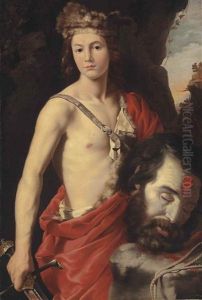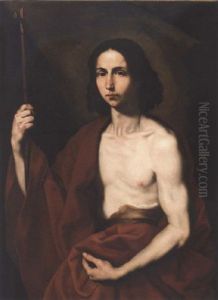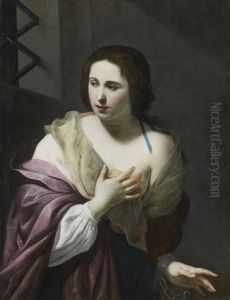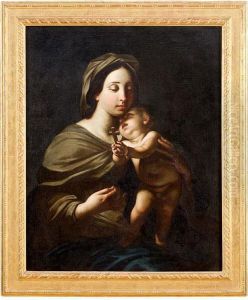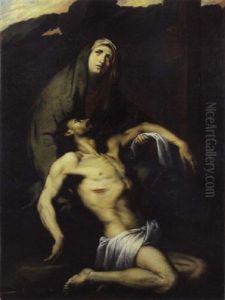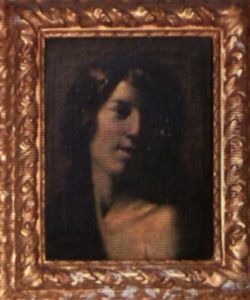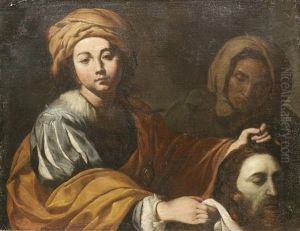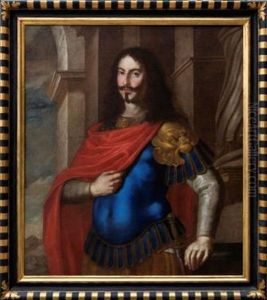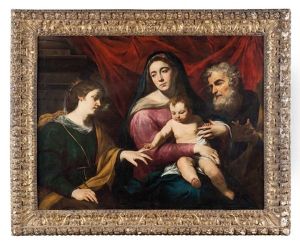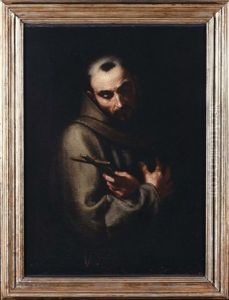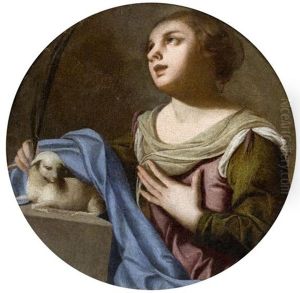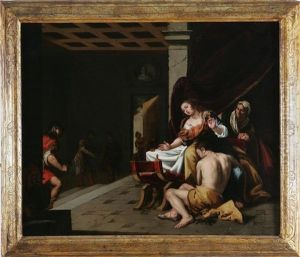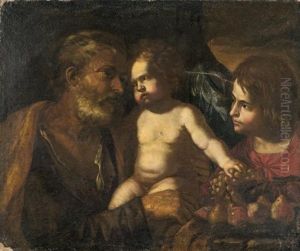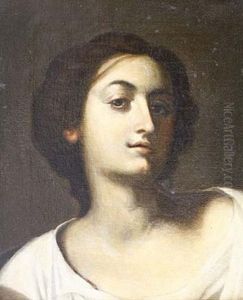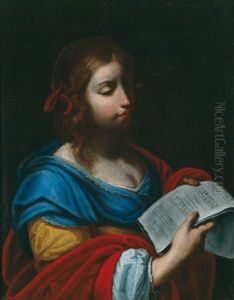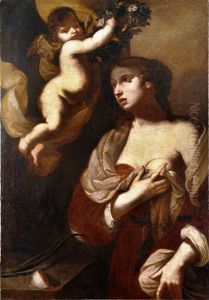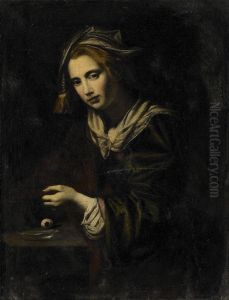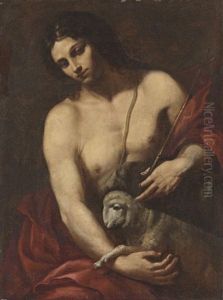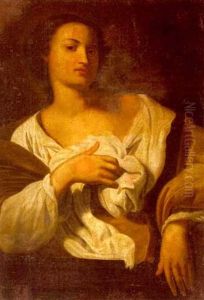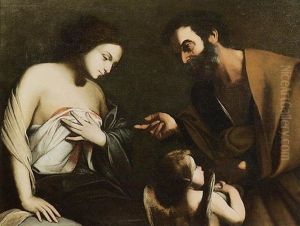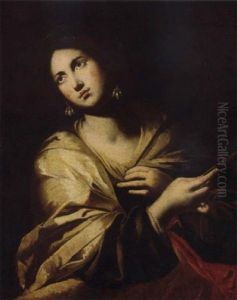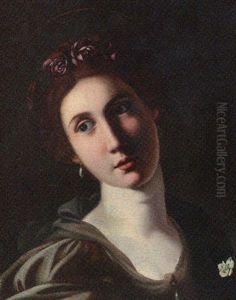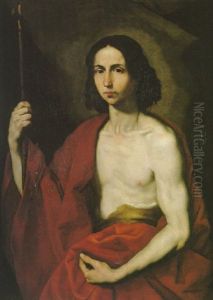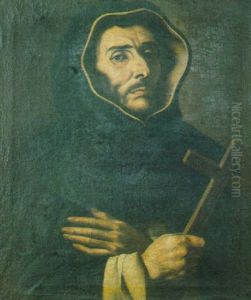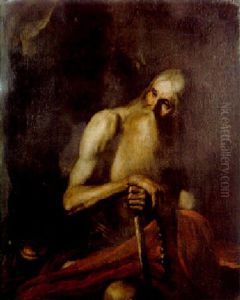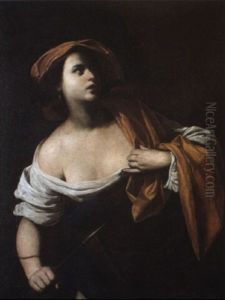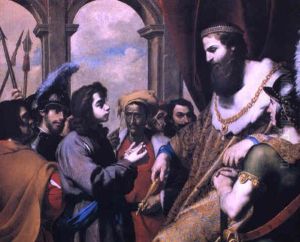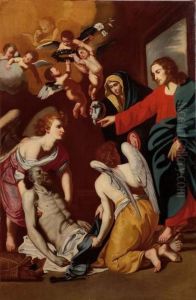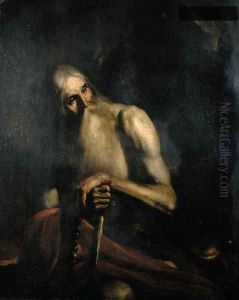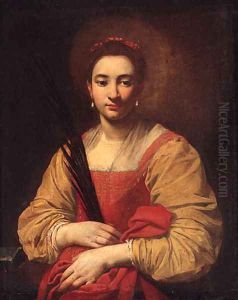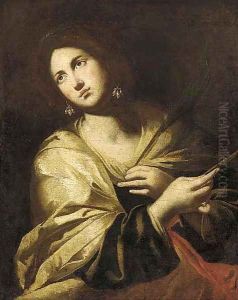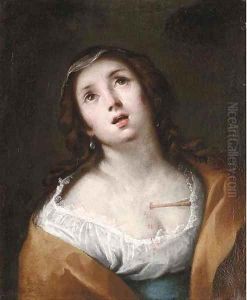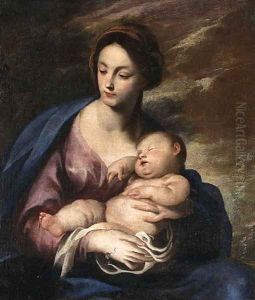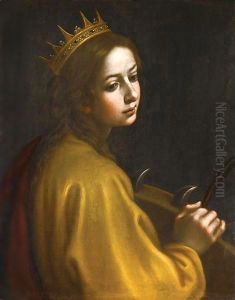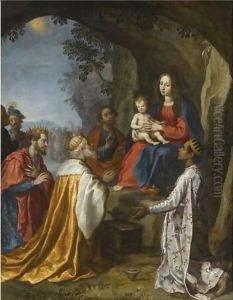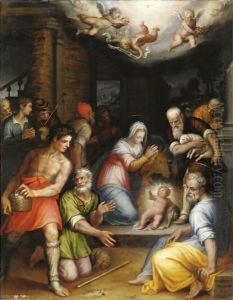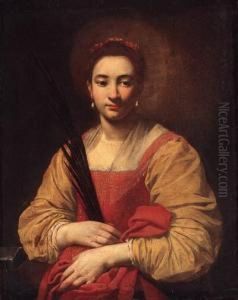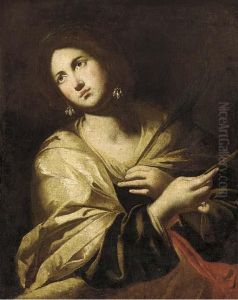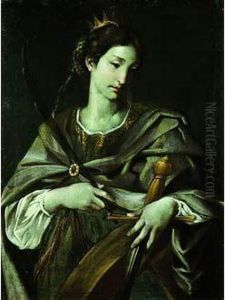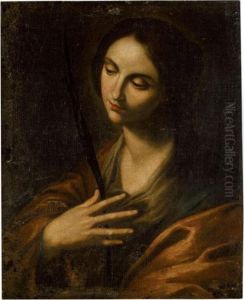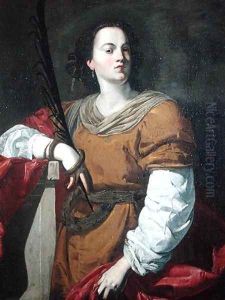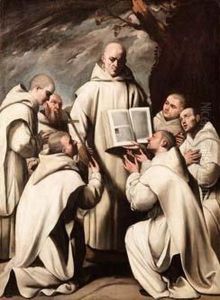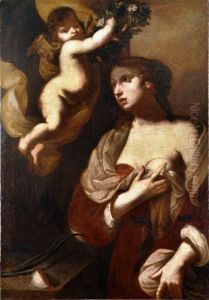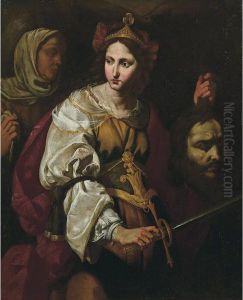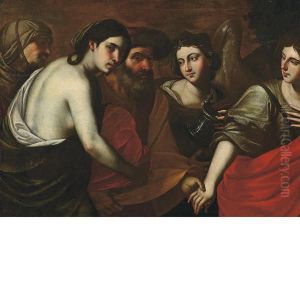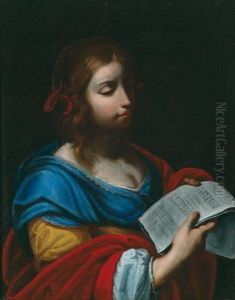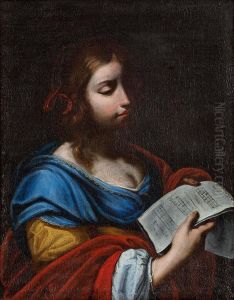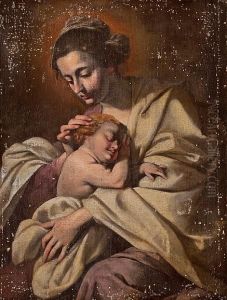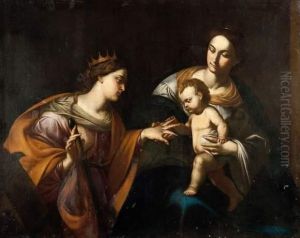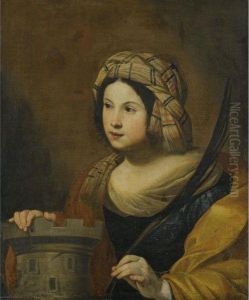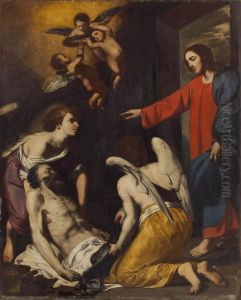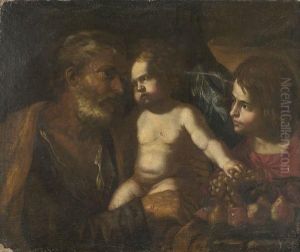Francesco Guarino Paintings
Francesco Guarino, born in 1611 in Sant'Agata de' Goti, a small town in Campania, Italy, was a Baroque painter who is recognized for his contributions to the Italian Baroque movement. He came from an artistic family; his father, Tommaso Guarino, was a painter who had a significant influence on Francesco's early training and artistic development.
Guarino initially worked in his father's workshop before moving to Naples, where he was exposed to the thriving artistic environment and the work of renowned artists such as Caravaggio, whose dramatic use of chiaroscuro had a lasting impact on Guarino's style. He was also influenced by the works of Guido Reni and Anthony van Dyck. Throughout his career, Guarino developed a distinctive style characterized by a strong use of light and shadow, dynamic compositions, and a focus on religious and mythological subjects.
Francesco Guarino's work was primarily commissioned by churches and involved altarpieces, frescoes, and other religious works. Despite not achieving widespread fame during his lifetime, Guarino's art played a significant role in the spread of Baroque aesthetics, particularly in the Campania region and neighboring areas. Some of his notable works include 'The Annunciation' in the church of Sant'Agata de' Goti and 'Christ at the Column' located in the Museum of San Martino in Naples.
Unfortunately, Guarino's life was relatively short, and he died in 1651 at the age of 40. His death brought an abrupt end to a promising career, but his works continued to be appreciated for their emotional intensity and technical skill. Guarino's legacy as an artist is marked by his ability to convey complex emotions through his mastery of light and composition, making him an important figure in the development of Baroque painting in Southern Italy.
